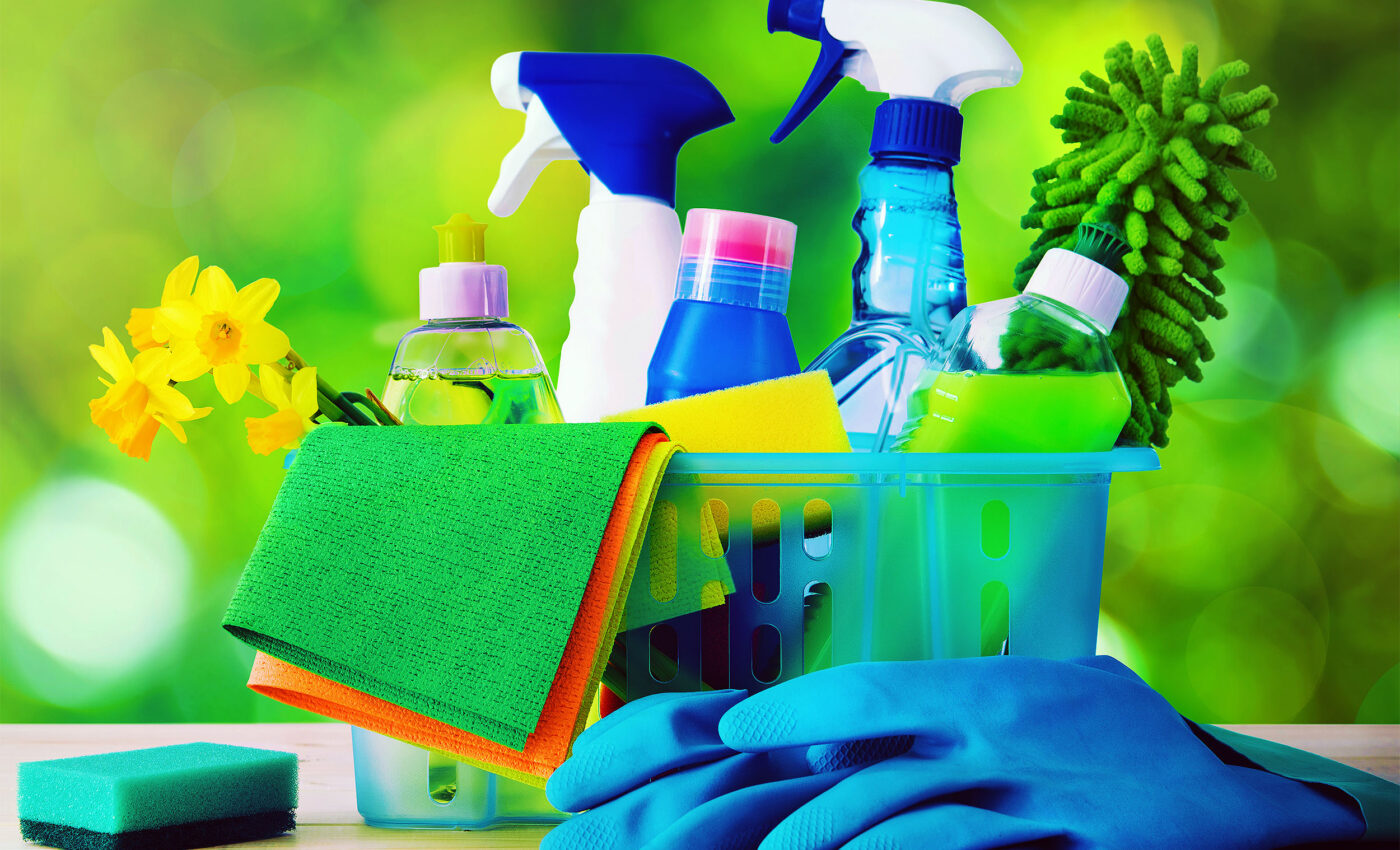
"Green" cleaning products are often as harmful as traditional ones
Recent findings indicate that “green” cleaning products may not be as environmentally friendly or safe as presumed, emitting harmful chemicals at levels comparable to traditional cleaning products.
This surprising finding calls for enhanced regulations and clearer consumer guidance regarding the safety of so-called “green” cleaning products, as well as their traditional counterparts.
Volatile organic compounds (VOCs)
Published in the journal Environmental Science Processes & Impacts by The Royal Society of Chemistry, the research underscores the potential air quality hazards posed by fragranced cleaning products within homes.
These products release a variety of volatile organic compounds (VOCs), some of which are dangerous or can transform into harmful secondary pollutants.
Despite the rising popularity of “green” cleaners under the belief of their health and environmental benefits, the study conducted by the University of York challenges this assumption.
The investigation focused on comparing the VOC output of 10 traditional and 13 “green” cleaning products, finding that the latter tend to release more monoterpenes.
This increase in monoterpene emissions can lead to higher concentrations of secondary pollutants like formaldehyde and peroxyacyl nitrates.
These chemicals pose significant health risks, including respiratory issues and potential skin irritation. Long-term exposure to certain pollutants like formaldehyde may even increase cancer risk.
“Green” cleaning products and misleading marketing
“Our research found there is no strong evidence to suggest that clean green products are better for indoor air quality compared to regular products. In fact, there was very little difference,” said lead author Ellen Harding-Smith, an Environmental Chemistry researcher at the Department of Environment & Geography.
“Many consumers are being misled by the marketing of these products and could be damaging the air quality in their homes as a result – potentially putting their health at risk. For so many products on the supermarket shelves, green doesn’t mean clean.”
To mitigate the potential harm caused by these products, Harding-Smith advises manufacturers to disclose more information about their ingredients and to educate consumers on improving indoor air quality, such as increasing ventilation and opening windows during use.
This approach could significantly enhance the safety and environmental friendliness of cleaning products used in homes.
Importance of indoor air quality
Poor indoor air quality can lead to a range of health issues, from short-term effects such as irritation of the eyes, nose, and throat, headaches, dizziness, and fatigue, to long-term effects including respiratory diseases, heart disease, and even cancer.
People with pre-existing health conditions, older people, and children are particularly vulnerable to the impacts of poor indoor air quality.
Improving indoor air quality involves several strategies including increasing ventilation to bring in fresh outdoor air, using air purifiers to remove pollutants from indoor air, maintaining heating, ventilation, and air conditioning (HVAC) systems, controlling sources of pollution by choosing low-emission materials and products, and keeping the indoor environment clean through regular cleaning and dusting.
Monitoring indoor air quality through various sensors and indicators can also help identify and mitigate pollution sources effectively, ensuring a healthier indoor environment.
Understanding VOCs and “green” cleaning products
As discussed above, Volatile Organic Compounds (VOCs) play a significant role in environmental chemistry and public health, warranting closer scrutiny due to their widespread presence and complex effects.
These organic chemicals, characterized by their high vapor pressure at room temperature, are prevalent in industrial settings and everyday environments, ranging from homes to offices.
Understanding VOCs, both from traditional and “green” cleaning products, involves exploring their sources, effects, and the measures we can take to mitigate their impact.
VOCs originate from a diverse array of sources. Inside homes, common contributors include paints, varnishes, and solvents, which release VOCs during application and as they dry.
Manufacturers incorporate VOCs into cleaning products to improve their efficiency in dissolving dirt, grease, and grime. From disinfectants and deodorizers to laundry detergents and floor cleaners, VOCs are common.
VOCs impact on health and environment
However, the convenience these chemicals offer comes with a downside. During use, and as they evaporate, these products release VOCs into the indoor environment, contributing to indoor air pollution.
Outside, vehicles and industrial processes are major sources, releasing VOCs into the atmosphere where they contribute to air pollution and form ground-level ozone, a key component of smog.
The impact of VOCs on human health and the environment is profound. Short-term exposure to high levels of VOCs can cause eye, nose, and throat irritation, headaches, nausea, and dizziness.
Long-term exposure raises more serious concerns, including liver, kidney, and central nervous system damage, and some VOCs have been linked to cancer in humans.
Environmentally, VOCs play a critical role in the formation of ground-level ozone and particulate matter, two of the main pollutants that contribute to smog and poor air quality.
This not only affects human health but also damages crops, ecosystems, and buildings.
Future of “green” cleaning products
Addressing the challenges posed by VOCs requires a multifaceted approach. At the individual level, choosing low-VOC or VOC-free products, ensuring proper ventilation when using products that emit VOCs, and adopting green cleaning alternatives can significantly reduce personal and household exposure.
On a broader scale, regulations and policies aimed at reducing VOC emissions from industrial sources, vehicles, and consumer products are critical. These include setting emission limits, promoting cleaner production processes, and encouraging the development and use of alternative, less harmful substances.
In summary, Volatile Organic Compounds are ubiquitous and multifaceted, posing challenges to public health and environmental quality.
By understanding their sources, effects, and the strategies for mitigation, individuals and communities can take meaningful steps towards minimizing their impact.
It is through informed choices and stringent regulations that we can protect both our health and the environment from the adverse effects of VOCs.
—–
Like what you read? Subscribe to our newsletter for engaging articles, exclusive content, and the latest updates.
—–
Check us out on EarthSnap, a free app brought to you by Eric Ralls and Earth.com.
—–













